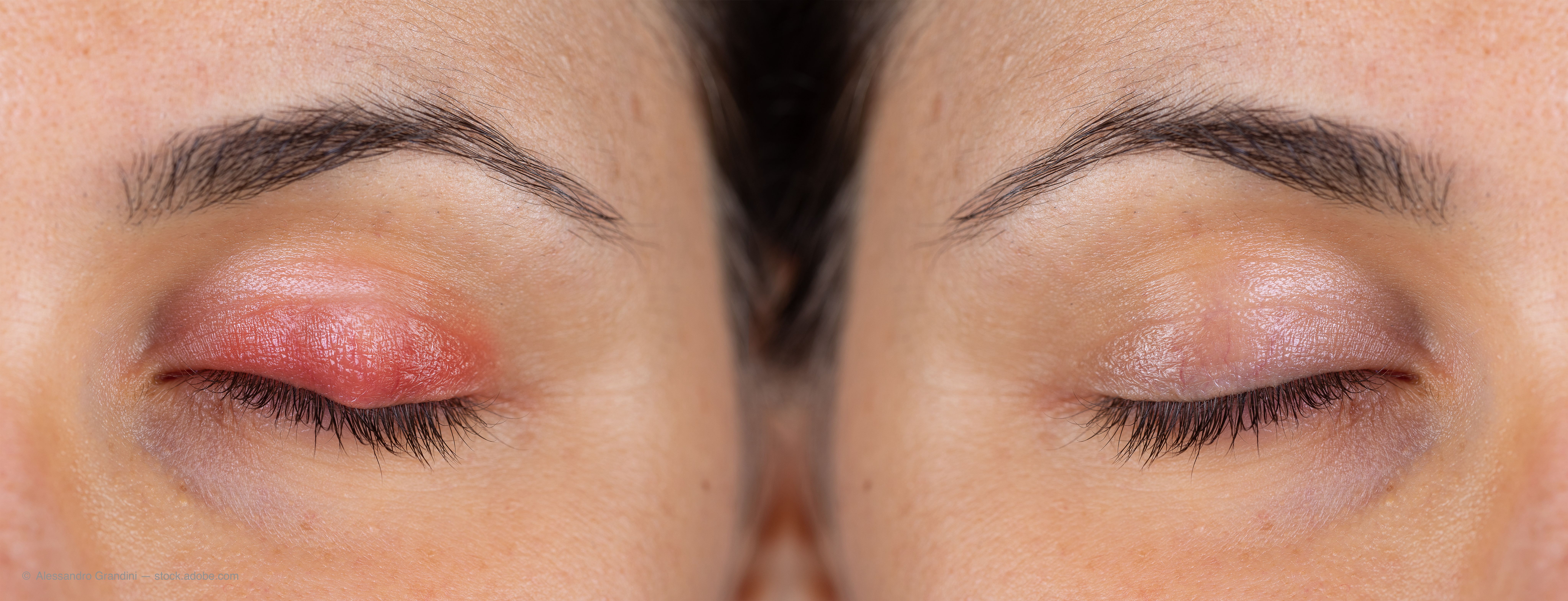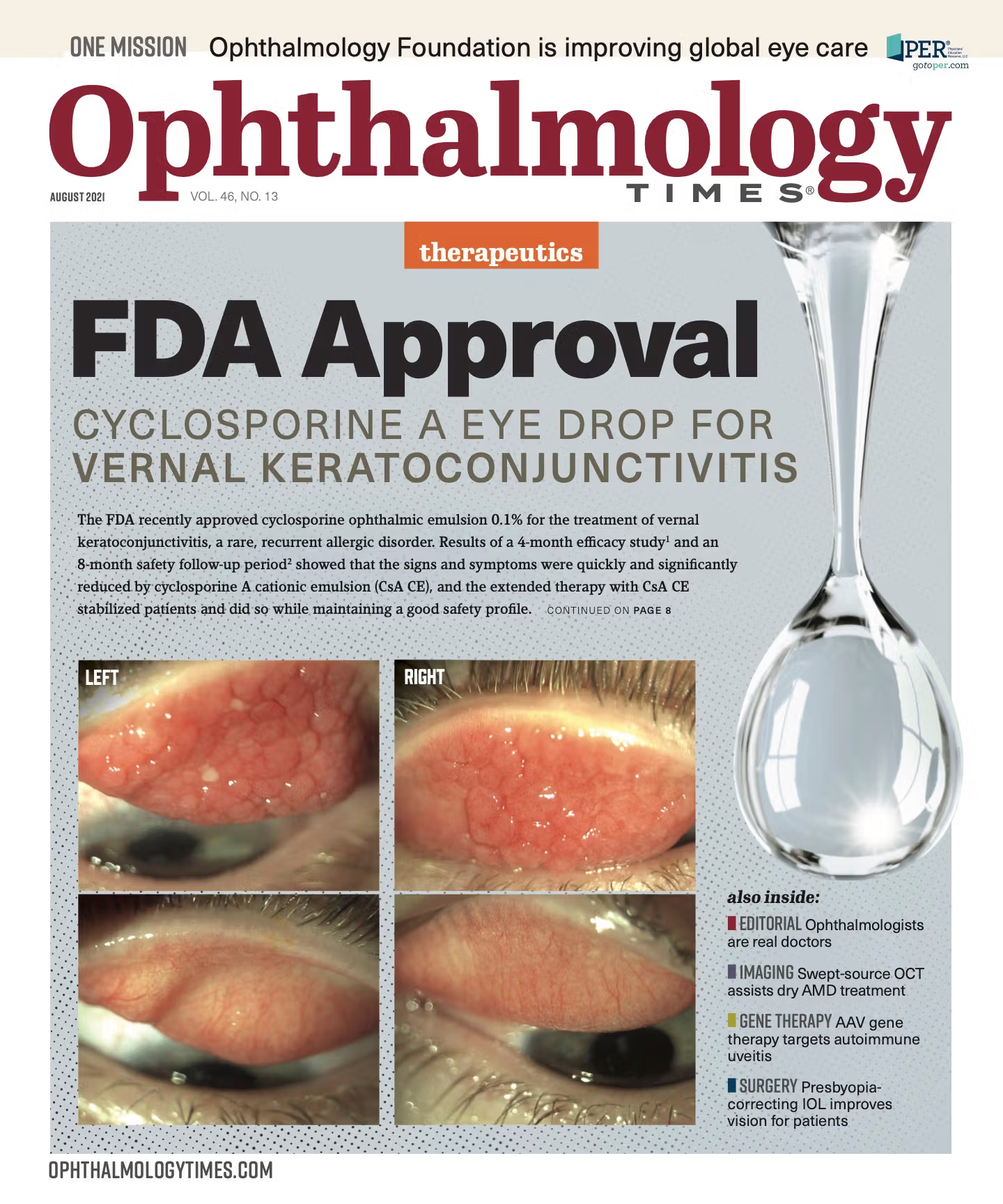Publication
Article
Digital Edition
Detailing consequences of Demodex blepharitis
Author(s):
Symptomatic, psychosocial burdens in participants .


Listen to this interview: Evaluating safety, efficacy of TP03 for Demodex blepharitis treatment
Reviewed by Elizabeth Yeu, MD
A retrospective study of adults with Demodex blepharitis demonstrates that this common condition has important negative functional and psychosocial effects, according to Elizabeth Yeu, MD.
The study, known as ATLAS, analyzed data from questionnaires that were completed by 311 patients who had objective signs of Demodex blepharitis, including the presence of Demodex mites, collarettes on the lashes, and lid margin erythema.
The results showed that 80% of patients said that blepharitis negatively affected daily life and that the impacts were felt in multiple ways.
“Many clinicians underestimate the prevalence and impact of Demodex blepharitis due to symptom overlap with other ocular surface diseases that are often comorbidities, such as dry eye disease,” said Yeu, an assistant professor of ophthalmology at Eastern Virginia Medical School and a partner at Virginia Eye Consultants in Norfolk. “However, it has been estimated that blepharitis affects approximately 20 million Americans, of whom about 45% have an associated infestation with Demodex mites.”
Related: Treating Demodex blepharitis efficiently before surgery
Yeu pointed out that ATLAS is a pioneering study investigating the consequences of Demodex blepharitis, and its results indicate that affected patients may struggle for years with significant clinical, functional, and psychosocial impacts.
“Therefore, it is important that clinicians be proactive about diagnosing Demodex blepharitis and offering treatment,” she said.
The data for the ATLAS study were derived from participants in SATURN-1, a multicenter, phase 2b/3 clinical trial investigating the efficacy and safety of TP-03 (lotilaner 0.25% ophthalmic solution; Tarsus Pharmaceuticals) for treating Demodex blepharitis.
To be eligible for enrollment in the SATURN-1 study, patients had to have 10 or more collarettes on the upper lashes, 1.5 or more mites per lash, and at least mild lid margin erythema.
The ATLAS participants’ questionnaire responses showed that women were more likely than men to experience a negative impact from their Demodex blepharitis, but the majority of both men (72%) and women (84%) suffered adverse consequences.
Having difficulty driving at night and feeling or being conscious of their eyes all day were the most common issues, both noted by 47% of patients.
Related: Considering Demodex infestation and cataract surgery
“Notably in terms of emotional impact, about 23% of both males and females said they were constantly worrying about their eyes, and 6% of the participants indicated that their blepharitis affected their mental state, with this impact felt more often by males than females,” Yeu said.
Approximately 30% of both males and females said that blepharitis added time to their daily hygiene routine, 8% reported having discomfort with their contact lenses or having to reduce wear time because of the condition, and 5% noted that they avoided ocular surgery because of the blepharitis.
The cosmetic consequences were also common. Twenty-three percent of respondents (females 27%, males 16%) felt blepharitis had an adverse effect on the appearance of their eyes or eyelids.
One-third of women indicated the condition interfered with their ability to wear makeup, and 5% of women noted discomfort when wearing artificial lashes.
Related: Tarsus execs discuss origins, treating Demodex blepharitis
Clinical care
Yeu also noted that the identification of collarettes, which are a pathognomonic sign for Demodex blepharitis, makes the diagnosis easy and straightforward.
“Itching is a common symptom of Demodex blepharitis, and patients who are complaining of itching may be misdiagnosed as having allergic conjunctivitis,” she explained. “Thus, clinical examination to identify collarettes is key for making the diagnosis and helping our patients, and it is easily done when patients look down during the slit-lamp examination.”
Because there is no FDA-approved product for safely and effectively treating Demodex blepharitis, providing effective treatment is more difficult than making an accurate diagnosis.
“Current management options do not treat the underlying cause of disease, which is the mite infestation,” Yeu said. “In addition, many treatments have low tolerability that makes patient compliance a challenge.”
The study results, Yeu explained, demonstrate that an easy, safe, and effective therapy for Demodex blepharitis is greatly needed.
Related: VA and visual function go the way of ocular inflammation
“Lotilaner solution that is being developed by Tarsus Pharmaceuticals is a specific antiparasitic agent that has been shown to work well for eradicating Demodex mites and improving signs and symptoms of Demodex blepharitis,” she said.
When treating patients with Demodex blepharitis, Yeu recommended the use of tea tree oil wipes for patients with no more than 10 collarettes along the lid margin.
In cases with more marked involvement, she recommends in-office microblepharoexfoliation (BlephEx; Alcon) and topical treatment with an antibiotic-steroid ointment to the lid margins for 7 days, plus tea tree oil wipes for 6 weeks.
Elizabeth Yeu, MD
E: eyeu@cvphealth.com
Yeu is a consultant for and does research with Tarsus Pharmaceuticals and Alcon.

Newsletter
Don’t miss out—get Ophthalmology Times updates on the latest clinical advancements and expert interviews, straight to your inbox.




